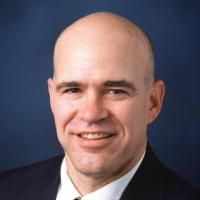Four-decade responses of soil trace elements to an aggrading old-field forest: B, Mn, Zn, Cu, and Fe.
Abstract
In the ancient and acidic Ultisol soils of the Southern Piedmont, USA, we studied changes in trace element biogeochemistry over four decades, a period during which formerly cultivated cotton fields were planted with pine seedlings that grew into mature forest stands. In 16 permanent plots, we estimated 40-year accumulations of trace elements in forest biomass and O horizons (between 1957 and 1997), and changes in bioavailable soil fractions indexed by extractions of 0.05 mol/L HCl and 0.2 mol/L acid ammonium oxalate (AAO). Element accumulations in 40-year tree biomass plus O horizons totaled 0.9, 2.9, 4.8, 49.6, and 501.3 kg/ha for Cu, B, Zn, Mn, and Fe, respectively. In response to this forest development, samples of the upper 0.6-m of mineral soil archived in 1962 and 1997 followed one of three patterns. (1) Extractable B and Mn were significantly depleted, by -4.1 and -57.7 kg/ha with AAO, depletions comparable to accumulations in biomass plus O horizons, 2.9 and 49.6 kg/ha, respectively. Tree uptake of B and Mn from mineral soil greatly outpaced resupplies from atmospheric deposition, mineral weathering, and deep-root uptake. (2) Extractable Zn and Cu changed little during forest growth, indicating that nutrient resupplies kept pace with accumulations by the aggrading forest. (3) Oxalate-extractable Fe increased substantially during forest growth, by 275.8 kg/ha, about 10-fold more than accumulations in tree biomass (28.7 kg/ha). The large increases in AAO-extractable Fe in surficial 0.35-m mineral soils were accompanied by substantial accretions of Fe in the forest's O horizon, by 473 kg/ha, amounts that dwarfed inputs via litterfall and canopy throughfall, indicating that forest Fe cycling is qualitatively different from that of other macro- and micronutrients. Bioturbation of surficial forest soil layers cannot account for these fractions and transformations of Fe, and we hypothesize that the secondary forest's large inputs of organic additions over four decades has fundamentally altered soil Fe oxides, potentially altering the bioavailability and retention of macro- and micronutrients, contaminants, and organic matter itself. The wide range of responses among the ecosystem's trace elements illustrates the great dynamics of the soil system over time scales of decades.
Type
Department
Description
Provenance
Citation
Permalink
Collections
Scholars@Duke

Daniel D. Richter
Richter’s research and teaching links soils with ecosystems and the wider environment, most recently Earth scientists’ Critical Zone. He focuses on how humanity is transforming Earth’s soils from natural to human-natural systems, specifically how land-uses alter soil processes and properties on time scales of decades, centuries, and millennia. Richter's book, Understanding Soil Change (Cambridge University Press), co-authored with his former PhD student Daniel Markewitz (Professor at University of Georgia), explores a legacy of soil change across the Southern Piedmont of North America, from the acidic soils of primary hardwood forests that covered the region until 1800, through the marked transformations affected by long-cultivated cotton, to contemporary soils of rapidly growing and intensively managed pine forests. Richter and colleagues work to expand the concept of soil as the full biogeochemical weathering system of the Earth’s crust, ie, the Earth’s belowground Critical Zone, which can be tens of meters deep. The research examines decadal to millennial changes in the chemistry and cycling of soil C, N, P, Ca, K, Mg, and trace elements B, Fe, Mn, Cu, Be, Zr, and Zn across full soil profiles as deep at 30-m. Since 1988, Richter has worked at and directed the Long-Term Calhoun Soil-Ecosystem Experiment (LTSE) in the Piedmont of South Carolina, a collaborative study with the USDA Forest Service that quantifies how soils form as natural bodies and are transformed by human action, and a study that has grown to become an international model for such long-term soil and ecosystem studies. In 2005, Richter and students initiated the first comprehensive international inventory project of the world’s LTSEs, using an advanced-format website that has networked metadata from 250 LTSEs. The LTSEs project has held three workshops at Duke University, NCSU's Center for Environmental Farming Systems, and the USDA Forest Service's Calhoun Experimental Forest and Coweeta Hydrologic Laboratory, hosting representatives from Africa, Asia, Australia, Europe, and the Americas. Richter's 60-year old Long Term Calhoun Soil and Ecosystem Experiment is linked to similar experiments and platforms around the world via the ‘Long-Term Soil-Ecosystem Experiments Global Inventory’, assembled by Dan Richter, Pete Smith, and Mike Hofmockel."He is an active member of the International Commission on Stratigraphy’s Working Group on the Anthropocene. Richter has written in the peer-reviewed literature about all of these projects, and in November 2014 his soils research at the Calhoun and his soils teaching were featured in Science magazine.
Unless otherwise indicated, scholarly articles published by Duke faculty members are made available here with a CC-BY-NC (Creative Commons Attribution Non-Commercial) license, as enabled by the Duke Open Access Policy. If you wish to use the materials in ways not already permitted under CC-BY-NC, please consult the copyright owner. Other materials are made available here through the author’s grant of a non-exclusive license to make their work openly accessible.
